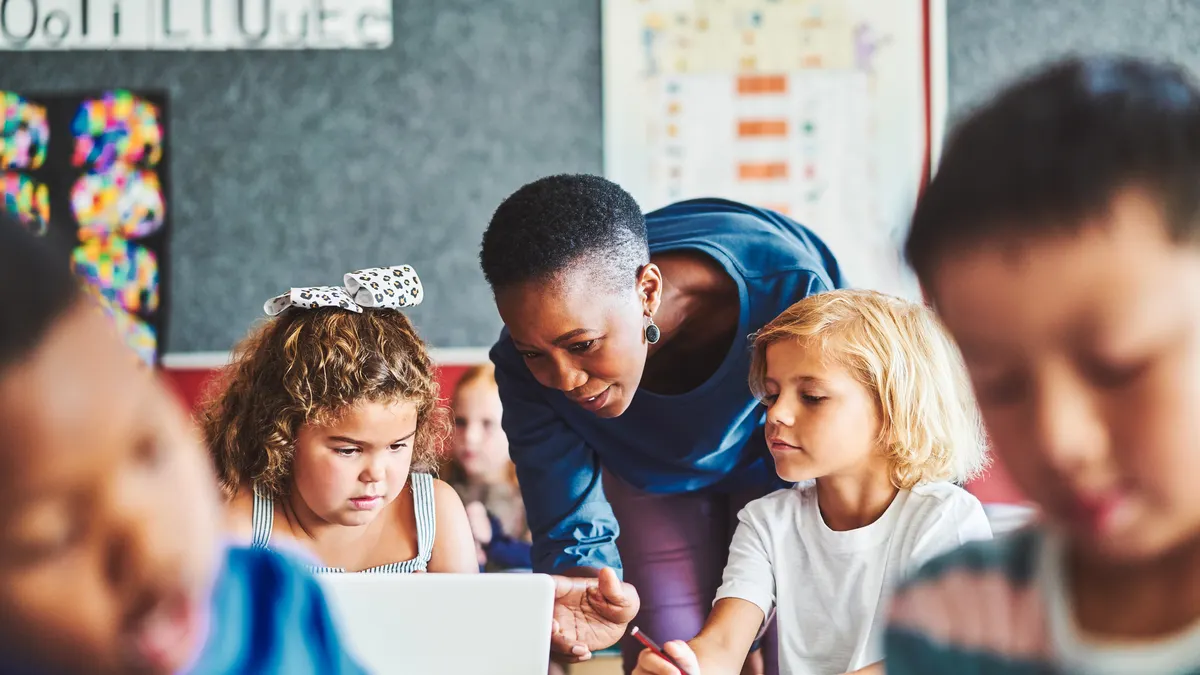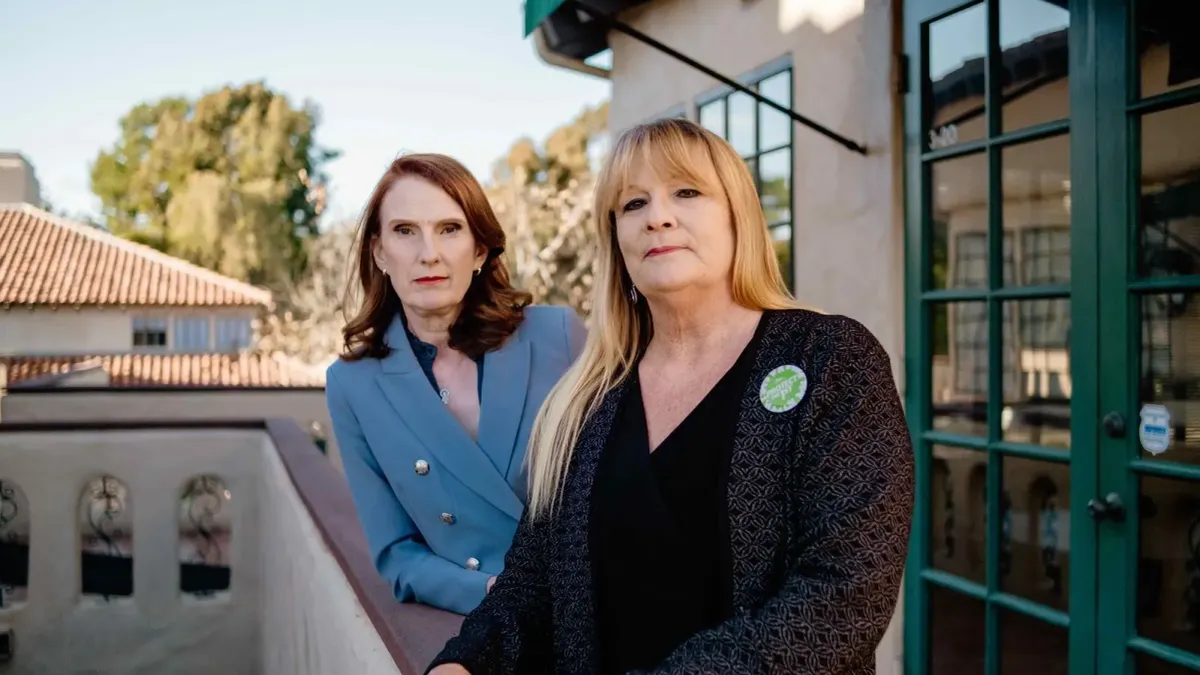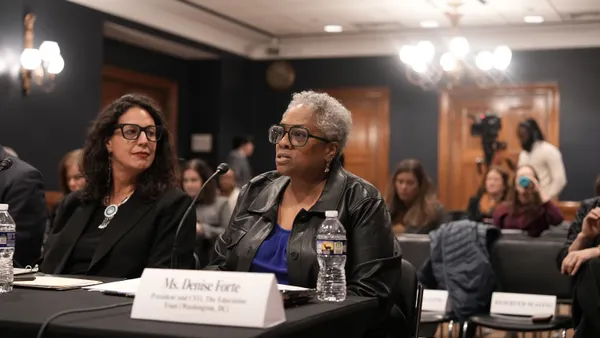The last time this year’s 7th-graders had a normal school year — without remote learning, masking and social distancing — was in 2018-19, when they were in 4th grade.
Not only has there been a global pandemic since then, but there’s been a tumultuous presidential election, a national awakening to racial injustice, climate catastrophes, and personal physical and social changes these tweens and teens experienced.
Middle school administrators recognize this and are implementing social-emotional learning strategies specific to their middle school students.
“I just think that people who teach middle school know that this is a huge period of change for kids,” said Susan Purcell-Orleck, SEL facilitator at Meigs Academic Magnet Middle School in Nashville, Tennessee.
Purcell-Orleck said middle school students, who are typically between the ages of 11-14 are going through a growth spurt physically, emotionally and socially. They don’t want to be treated like little kids but still need social and emotional guidance, such as recognizing and preventing bullying and understanding how to use a growth mindset.
Middle-schoolers also are trying to figure out who they are and their place and purpose in school, family, social and neighborhood communities. “Anything we can do to help that, and to try and understand that and show them that we care about that is so important to them,” Purcell-Orleck said.
While researchers and educators say SEL programming for middle schoolers is critical, the practice receives less attention and less extensive research than programming for elementary-aged students, according to a 2017 paper from Pennsylvania State University.
It is important for middle school teachers to look at SEL behaviors as a skill deficit, Doug Buttorff, an Oregon mathematics teacher with a specialty in teaching students with special education and behavioral needs, said in an email.
Skills such as executive functioning, language processing and emotional regulation need to be discreetly taught, and students need support in these areas the same way they may need academic supports, said Buttorff, who is also a content designer with NWEA's Professional Learning team.
CASEL has resources specific to middle school SEL approaches and programs such as Move This World, are built on its best-practice research. Second Step Middle School also has curriculum resources targeting this age group. Administrators also use SEE Learning from Emory University as an SEL resource for developmentally-aged curriculum.
Here are strategies two schools have adopted to focus attention on the social-emotional wellbeing of their middle-schoolers.
Meigs Academic Magnet Middle School
Meigs is a 680-student, grade 5-8 public school within Metro Nashville Public Schools. In early March 2020, a tornado caused significant damage to the school building, making it unusable. A week and a half later, after staff had relocated the schools’ equipment and salvageable furniture to a temporary school location, the entire school system closed for in-person learning due to the coronavirus.
Although the school opened for in-person learning last winter, several middle school students only returned to campuses this fall. There’s been a lot of trauma and difficulty, Purcell-Orleck said, but collectively, students are happy to be back together.
Because of the extended time learning from home, students are having to relearn school routines and patience. Many were used to getting snacks and taking bathroom breaks whenever they wanted.
Teachers are also noticing students — who are admitted to the school based on applications and a lottery system — are putting a lot of academic pressure on themselves, Purcell-Orleck said.
To address these pressures, the school’s SEL programming touches on how students can have a growth mindset and recognize failures and challenges are often valuable opportunities to learn skills, such as resilience and persistence.
Every school day begins and ends with a Move This World activity, which is a short video featuring lessons on SEL skills. Purcell-Orleck also promotes other SEL activities, such as mindfulness, stretching and hand rhythms, that teachers can incorporate into their classes.
“I always tell the kids that my job is to show them a lot of tools that they can put in their toolbox, and it's up to them to figure out which tools work for them because not all the tools work for everybody,” she said.
Teachers are also supported through ongoing training and a weekly newsletter Purcell-Orleck creates to introduce new SEL activities, videos, quotes and more. She also teaches SEL classes to the school’s 5th- and 6th-graders on a weekly basis.
Every faculty meeting also begins with an SEL exercise. When the school started its SEL focus six years ago, staff were hesitant to participate in the tapping, stretching and breathing exercises. Now, everyone is joining in, which Purcell-Orleck marks as a success.
If the adults have a healthy social-emotional balance, students pick-up on that, and it can be contagious, she said. “It’s been a hard year, and I’m hoping that it’ll get easier,” she said.
Belle Plaine Junior/Senior High School
Middle-schoolers at the 750-student Belle Plaine Junior/Senior High School in Minnesota are the youngest students in the building with grades 7-12. Not only are the 7th- and 8th-graders new to the middle school routines and academic expectations, they are trying to figure out their interests and friend groups while dealing with different pressures in their personal lives, said Amie Hohenstein, one of the school’s three SEL student support specialists.
Due to the school’s various learning formats last year, educators are having to reinforce positive school behaviors and expectations, such as self-control, self-management and responsible decision-making as students return to full-time, in-person learning.
At Belle Plaine Junior/Senior High School, SEL programming is supported districtwide and is coordinated with the positive behavioral intervention supports at the school. The school also begins and ends its day with grade-specific Move This World SEL activities and has even extended its sixth period class by 10 minutes to make sure the content is covered in addition to the academic course content for that class, Hohenstein said.
Additionally, one staff member from each grade level meets once a month to discuss areas for improvement in the SEL curriculum. The school is also forming an SEL student ambassador team that will include two students from each grade level who will be SEL leaders of the student body. Hohenstein also distributes a monthly newsletter with SEL information to the school community, including parents.
Although it’s only the third year of the school’s work with Move This World, Hohenstein said the calming and self-management skills are already evident during different aspects of the school day. For example, during an intense volleyball game, students in the stands began doing a shake-off exercise to help release nerves by shaking body parts to a coordinated count. Drama students have also used SEL calming techniques before a performance.
Hohenstein said she’s continually suggesting exercises students and staff can use for SEL skill building, because an exercise used for one situation might not work for a different setting.
“It's really a daily routine common practice that you're getting different skills and techniques and comfortability-wise every day because you feel different every day,” Hohenstein said.






 Dive Awards
Dive Awards













